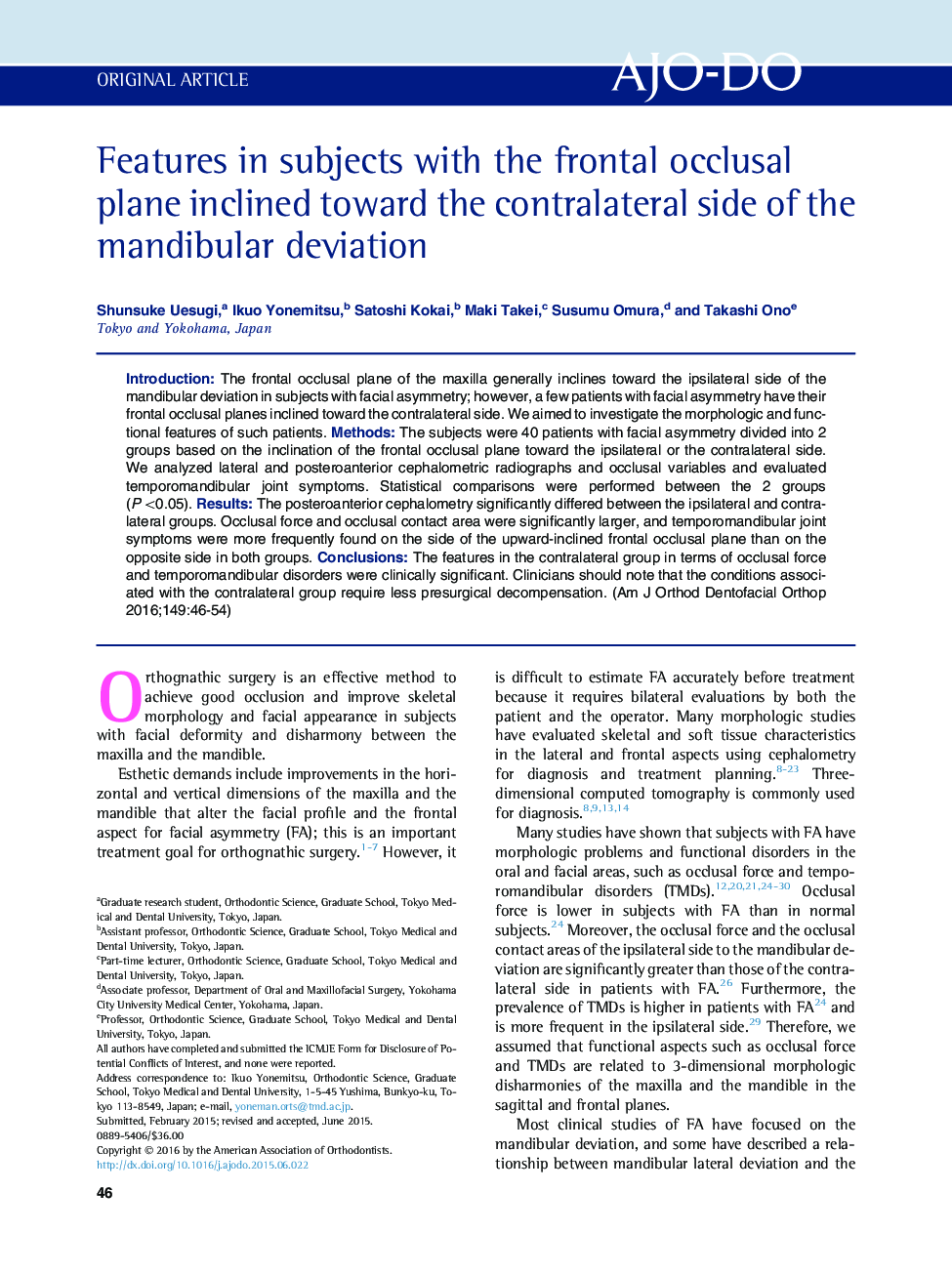| Article ID | Journal | Published Year | Pages | File Type |
|---|---|---|---|---|
| 3115757 | American Journal of Orthodontics and Dentofacial Orthopedics | 2016 | 9 Pages |
•Frontal occlusal plane inclination and mandibular deviation were studied.•The maxillary bone was inclined toward the contralateral side.•Dental compensation in the mandibular molars was less.•Occlusal force and contact area were larger contralateral to the deviation.•Clicking was less prevalent ipsilateral to the deviation, more prevalent contralateral.
IntroductionThe frontal occlusal plane of the maxilla generally inclines toward the ipsilateral side of the mandibular deviation in subjects with facial asymmetry; however, a few patients with facial asymmetry have their frontal occlusal planes inclined toward the contralateral side. We aimed to investigate the morphologic and functional features of such patients.MethodsThe subjects were 40 patients with facial asymmetry divided into 2 groups based on the inclination of the frontal occlusal plane toward the ipsilateral or the contralateral side. We analyzed lateral and posteroanterior cephalometric radiographs and occlusal variables and evaluated temporomandibular joint symptoms. Statistical comparisons were performed between the 2 groups (P <0.05).ResultsThe posteroanterior cephalometry significantly differed between the ipsilateral and contralateral groups. Occlusal force and occlusal contact area were significantly larger, and temporomandibular joint symptoms were more frequently found on the side of the upward-inclined frontal occlusal plane than on the opposite side in both groups.ConclusionsThe features in the contralateral group in terms of occlusal force and temporomandibular disorders were clinically significant. Clinicians should note that the conditions associated with the contralateral group require less presurgical decompensation.
